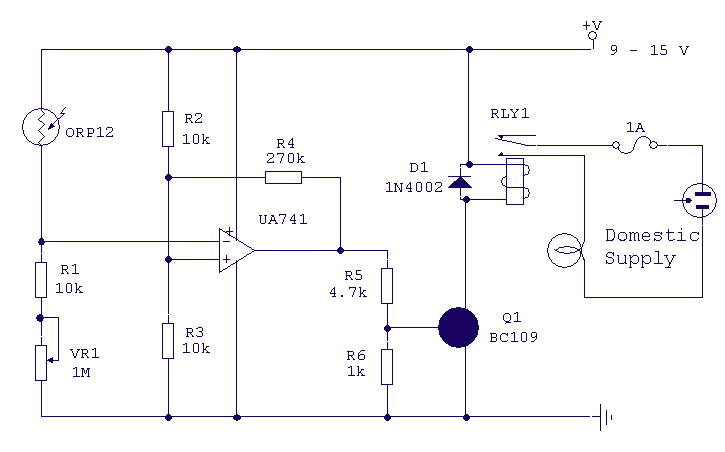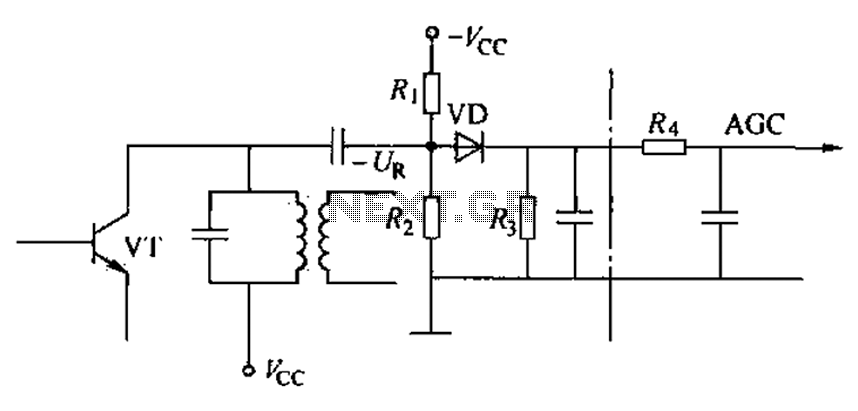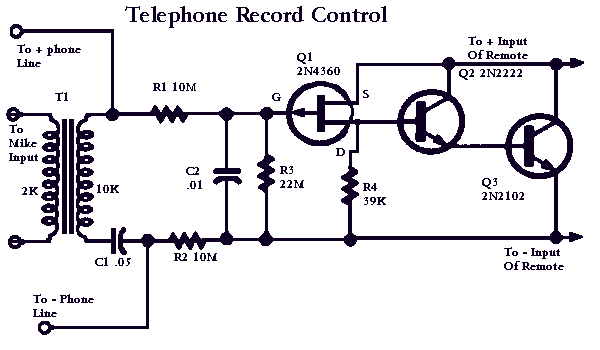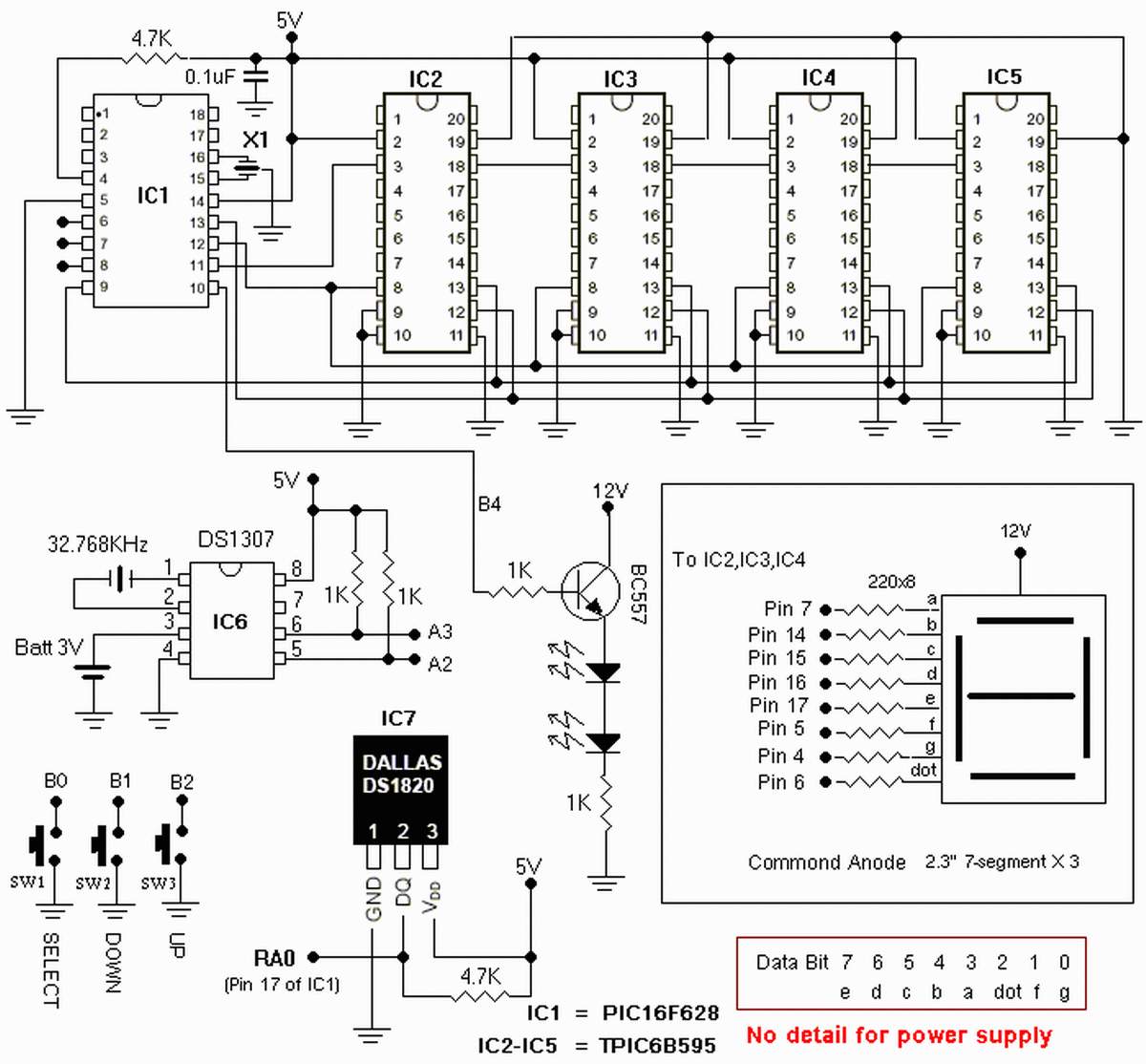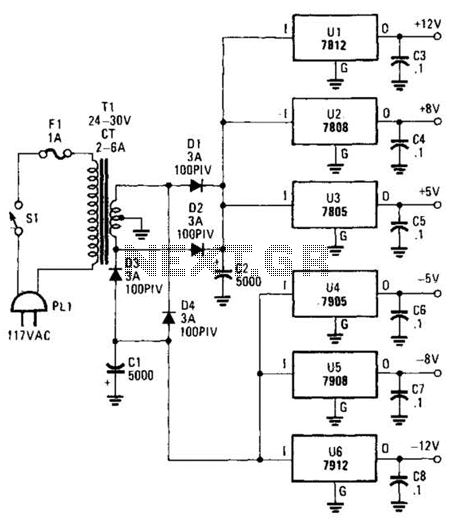
3v fm transmitter circuit

This 3V FM transmitter circuit is one of the simplest and most effective basic transmitters, offering a commendable transmitting range. It is remarkably powerful considering its small component count and 3V operating voltage. It can easily cover over three floors of a residential building and reach distances of over 300 meters in open air. The circuit primarily functions as a radio frequency (RF) oscillator operating around 100 MHz. Audio signals picked up and amplified by an electret microphone are fed into an audio amplifier stage built around the first transistor. The output from the amplifier is directed to the base of a second transistor, where it modulates the oscillating frequency of the tank circuit (comprising the five-turn coil and the trimmer capacitor) by varying the base capacitance of the transistor. The base capacitance is influenced by the potential variation applied to the base of the transistor. The tank circuit is configured in a Colpitts oscillator arrangement, with the transmitter positioned approximately 10 feet away from an FM radio. The radio should be tuned to around 89 - 90 MHz. When the FM transmitter is activated, the coil's turns should be spaced about 1mm apart, ensuring that no winding affects another. A small screwdriver is used to adjust the trimmer capacitor, which should be removed after each adjustment to prevent unintended capacitance changes. Alternatively, a plastic screwdriver can be employed. If difficulties arise in locating the transmitting frequency, a second person can assist by tuning the FM receiver up and down after each adjustment. One complete turn of the trimmer capacitor will cover its entire capacitance range from 6pF to 45pF. The standard FM band tunes in over approximately one-tenth of the total capacitance range. Therefore, it is advisable to make adjustments in increments of 5 to 10 degrees at each turn. While tuning may require some patience, it is not overly complex. Maintaining at least a 10-foot distance between the radio and the FM transmitter is essential, as the transmitter emits harmonics, radiating not only on one frequency but across several adjacent frequencies. Following this procedure should facilitate locating the transmission frequency with minimal difficulty.
The 3V FM transmitter circuit is designed to operate efficiently with minimal components, making it an ideal choice for hobbyists and educational purposes. The circuit consists of two main active components: the first transistor acts as an audio amplifier, while the second transistor operates as a modulator for the RF signal. The electret microphone captures audio input, which is then amplified to a suitable level for modulation.
The Colpitts oscillator configuration is notable for its simplicity and effectiveness in generating stable RF signals. The tank circuit, composed of the coil and trimmer capacitor, is critical for determining the frequency of oscillation. The five-turn coil is wound carefully to avoid coupling with adjacent turns, which could distort the frequency output.
Adjusting the trimmer capacitor allows for fine-tuning of the transmitter frequency. The procedure for tuning involves incrementally adjusting the capacitor while monitoring the FM radio receiver for the clearest signal. The requirement for a minimum distance between the transmitter and receiver is due to the nature of RF transmission, where harmonics can interfere with the clarity of the received signal.
Overall, this circuit exemplifies a practical application of basic electronics principles, demonstrating how audio signals can be transmitted wirelessly across significant distances with simple components. It serves as an educational tool for understanding the fundamentals of radio frequency transmission, modulation techniques, and circuit design.This 3V FM transmitter Circuit is about the simplest and best basal transmitter to body and accept a advantageous transmitting range. It is decidedly able admitting its baby basic calculation and 3V operating voltage. It will calmly access over three floors of an accommodation architecture and go over 300 meters in the accessible air.
The ambit is basically a radio abundance (RF) oscillator that operates about 100 MHz. Audio best up andamplified by the electret microphone is fed into the audio amplifier date congenital about the aboriginal transistor. Output from the beneficiary is fed into the abject of the additional transistor area it modulates the beating abundance of the catchbasin ambit (the 5 about-face braid and the trimcap) by capricious the alliance capacitance of the transistor.
Alliance capacitance is a action of the abeyant aberration activated to the abject of the transistor. The catchbasin ambit is affiliated in a Colpitts Place the transmitter about 10 anxiety from a FM radio.
Set the radio to about about 89 - 90 MHz. Walk aback tothe FM transmitter and about-face it on. Spread the ambagious of the braid afar by about 1mm from anniversary other. No coilwinding should be affecting addition winding. Use a baby spiral disciplinarian to tune the trim cap. Remove the screwdriverfrom the trim spiral afterwards every acclimation so the LC ambit is not afflicted by devious capicitance. Or use a plasticscrewdriver. If you accept adversity award the transmitting abundance again accept a additional being tune up and downthe FM punch afterwards every adjustment.
One abounding about-face of the trim cap will awning its abounding ambit of capacitance from 6pF to 45pF. The accustomed FM bandage tunes in over about one tenth of the abounding ambit of the affability cap.
So it is best to acclimatize it in accomplish of 5 to 10 degrees at anniversary turn. So affability takes a little backbone but is not difficult. The acumen that there charge be at atomic 10 ft. break amid the radio and the FM transmitter is that the FM transmitter emits harmonics; it does not alone afford on one abundance but on several altered frequencies abutting to anniversary other. You should accept little adversity in award the Tx abundance back you chase this procedure. 🔗 External reference
The 3V FM transmitter circuit is designed to operate efficiently with minimal components, making it an ideal choice for hobbyists and educational purposes. The circuit consists of two main active components: the first transistor acts as an audio amplifier, while the second transistor operates as a modulator for the RF signal. The electret microphone captures audio input, which is then amplified to a suitable level for modulation.
The Colpitts oscillator configuration is notable for its simplicity and effectiveness in generating stable RF signals. The tank circuit, composed of the coil and trimmer capacitor, is critical for determining the frequency of oscillation. The five-turn coil is wound carefully to avoid coupling with adjacent turns, which could distort the frequency output.
Adjusting the trimmer capacitor allows for fine-tuning of the transmitter frequency. The procedure for tuning involves incrementally adjusting the capacitor while monitoring the FM radio receiver for the clearest signal. The requirement for a minimum distance between the transmitter and receiver is due to the nature of RF transmission, where harmonics can interfere with the clarity of the received signal.
Overall, this circuit exemplifies a practical application of basic electronics principles, demonstrating how audio signals can be transmitted wirelessly across significant distances with simple components. It serves as an educational tool for understanding the fundamentals of radio frequency transmission, modulation techniques, and circuit design.This 3V FM transmitter Circuit is about the simplest and best basal transmitter to body and accept a advantageous transmitting range. It is decidedly able admitting its baby basic calculation and 3V operating voltage. It will calmly access over three floors of an accommodation architecture and go over 300 meters in the accessible air.
The ambit is basically a radio abundance (RF) oscillator that operates about 100 MHz. Audio best up andamplified by the electret microphone is fed into the audio amplifier date congenital about the aboriginal transistor. Output from the beneficiary is fed into the abject of the additional transistor area it modulates the beating abundance of the catchbasin ambit (the 5 about-face braid and the trimcap) by capricious the alliance capacitance of the transistor.
Alliance capacitance is a action of the abeyant aberration activated to the abject of the transistor. The catchbasin ambit is affiliated in a Colpitts Place the transmitter about 10 anxiety from a FM radio.
Set the radio to about about 89 - 90 MHz. Walk aback tothe FM transmitter and about-face it on. Spread the ambagious of the braid afar by about 1mm from anniversary other. No coilwinding should be affecting addition winding. Use a baby spiral disciplinarian to tune the trim cap. Remove the screwdriverfrom the trim spiral afterwards every acclimation so the LC ambit is not afflicted by devious capicitance. Or use a plasticscrewdriver. If you accept adversity award the transmitting abundance again accept a additional being tune up and downthe FM punch afterwards every adjustment.
One abounding about-face of the trim cap will awning its abounding ambit of capacitance from 6pF to 45pF. The accustomed FM bandage tunes in over about one tenth of the abounding ambit of the affability cap.
So it is best to acclimatize it in accomplish of 5 to 10 degrees at anniversary turn. So affability takes a little backbone but is not difficult. The acumen that there charge be at atomic 10 ft. break amid the radio and the FM transmitter is that the FM transmitter emits harmonics; it does not alone afford on one abundance but on several altered frequencies abutting to anniversary other. You should accept little adversity in award the Tx abundance back you chase this procedure. 🔗 External reference
